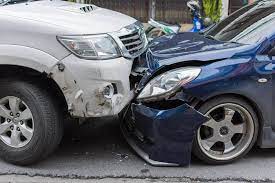The following commentary was published in The Hill and is written by Jeff Speck. He is a city planner and the author of “Walkable City, How Downtown Can Save America, One Step at a Time.” It has just been reissued in an updated 10th anniversary edition.
Especially relevant for us is his work in Memphis. In 2008, he evaluated Memphis planning and issued a report about what it takes to create successful neighborhoods and downtowns. It was “12 Modest Suggestions for Making Memphis Great.”
In 2013, he returned and issued a 74-page report to Memphis Mayor A C Wharton that recommended six ideas for the riverfront:
1. Make Riverside Drive a complete street.
2. Make Bass Pro Drive a complete street.
3. Encourage development along Bass Pro Drive.
4. Remake Jefferson Davis Park.
5. Complete the central Riverwalk.
6. Improve Tom Lee Park.
The following is his opinion piece in The Hill:
Transportation Secretary Pete Buttigieg recently announced $800 million in grants to reduce traffic deaths (with $1.1 billion more on the way). The funds are desperately needed, but there’s a catch: For every deadly street that these grants make safer, American engineers continue to build dozens of new streets that are just as lethal.
The problem is not just a few streets, but rather an entrenched apparatus of practices and standards that actively welcome dangerous driving. For this reason, only a dramatic change to the traffic engineering profession itself will produce the safer cities and towns Americans need.
Meanwhile, both vehicular and pedestrian death rates in Europe have been dropping steadily for years. What makes the U.S. so bad?
There are three main factors that distinguish American driving from European driving. Two of these – the proliferation of highway-fed suburban sprawl and 2.5-ton SUVs – have been well discussed, and would be difficult to fix.
A couple examples will make this contention clear. Engineers routinely design streets to support (and therefore invite) speeds well above the posted speed limit. Then, when speeding is observed on these streets, the manual published by the Federal Highway Administration requires that the speed limit be raised.
Next, engineers have been aware for a quarter century that replacing traffic signals with four-way stop signs saves lives. When Philadelphia removed the signals from 472 intersections in the 1970s, severe injury crashes dropped by 62.5 percent. Yet engineers still routinely place traffic signals where stop signs should go.
These are just two examples out of dozens available. Until these standards are changed, they will continue to kill and maim needlessly. And, because they are standards, enshrined in the manuals, they not only protect their perpetrators from lawsuits but they expose to great liability any engineer who has the nerve to build safer streets. For that reason, any change would likely need to come from the top. It’s not coming.
In the Netherlands, 500 children were killed in traffic in 1971. This led to a national “Stop de Kindermoord” (child murder) movement, and a scientific rethinking of Dutch road design. By 2014, this effort had reduced the number of child traffic deaths to nine.
How did they do it? Here in the U.S., engineers enforce “minimum design speeds”; Dutch engineers do the opposite. When designing a street, they first ask what speed cars should travel in the neighborhood. They then shape that street to limit elbow room, so that drivers do not feel comfortable going faster.
Contrast that Dutch approach with my experience a number of years ago designing a suburban neighborhood near Birmingham, Alabama. I was required by the county engineer to loosen the curves in a street until it achieved a “design speed” 10 mph above the posted limit — in a residential community. This approach seems preposterous to everyone, except apparently American engineers.
The entrenched pro-speed practices of our engineers helps to explain why Vision Zero – the global campaign to eliminate urban traffic deaths – is failing so miserably in North America. In Scandinavia, when they invoke Vision Zero, they literally mean zero. Neither Helsinki nor Oslo witnessed a single pedestrian fatality in 2019. Meanwhile, Atlanta’s Vision Zero coordinator was killed last year, run down with four others in a Chattanooga crosswalk.
“Isn’t it curious that traffic engineers are so loath to learn something new, even after repeated demonstrations?” So asked prominent urban theorist Jane Jacobs 20 years ago. The question persists, and it’s time that this negligent profession learn, or be held responsible for not learning.
Who is going to mount the massive class action lawsuit that properly lays bare the inner workings of this negligent industry? In America, for better or worse, progress seems to be made in the courts. It is hard to imagine any other venue through which we can begin to bring down the established standards that result in thousands of excess deaths annually. Until we do, this institutionalized mass manslaughter will continue.




I highly recommend Chuck Marohn’s book “Confessions of a Recovering Engineer” to anyone who is interested in this topic.